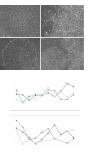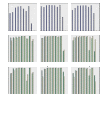Comparison of defined culture systems for feeder cell free propagation of human embryonic stem cells
- PMID: 20186512
- PMCID: PMC2855804
- DOI: 10.1007/s11626-010-9297-z
Comparison of defined culture systems for feeder cell free propagation of human embryonic stem cells
Abstract
There are many reports of defined culture systems for the propagation of human embryonic stem cells in the absence of feeder cell support, but no previous study has undertaken a multi-laboratory comparison of these diverse methodologies. In this study, five separate laboratories, each with experience in human embryonic stem cell culture, used a panel of ten embryonic stem cell lines (including WA09 as an index cell line common to all laboratories) to assess eight cell culture methods, with propagation in the presence of Knockout Serum Replacer, FGF-2, and mouse embryonic fibroblast feeder cell layers serving as a positive control. The cultures were assessed for up to ten passages for attachment, death, and differentiated morphology by phase contrast microscopy, for growth by serial cell counts, and for maintenance of stem cell surface marker expression by flow cytometry. Of the eight culture systems, only the control and those based on two commercial media, mTeSR1 and STEMPRO, supported maintenance of most cell lines for ten passages. Cultures grown in the remaining media failed before this point due to lack of attachment, cell death, or overt cell differentiation. Possible explanations for relative success of the commercial formulations in this study, and the lack of success with other formulations from academic groups compared to previously published results, include: the complex combination of growth factors present in the commercial preparations; improved development, manufacture, and quality control in the commercial products; differences in epigenetic adaptation to culture in vitro between different ES cell lines grown in different laboratories.
Figures





References
-
- Amit M, Itskovitz-Eldor J. Maintenance of human embryonic stem cells in animal serum- and feeder layer-free culture conditions. Methods Mol. Biol. 2006;331:105–113. - PubMed
Publication types
MeSH terms
Grants and funding
LinkOut - more resources
Full Text Sources
Other Literature Sources
Research Materials

